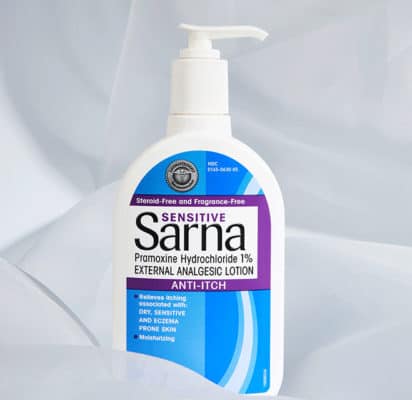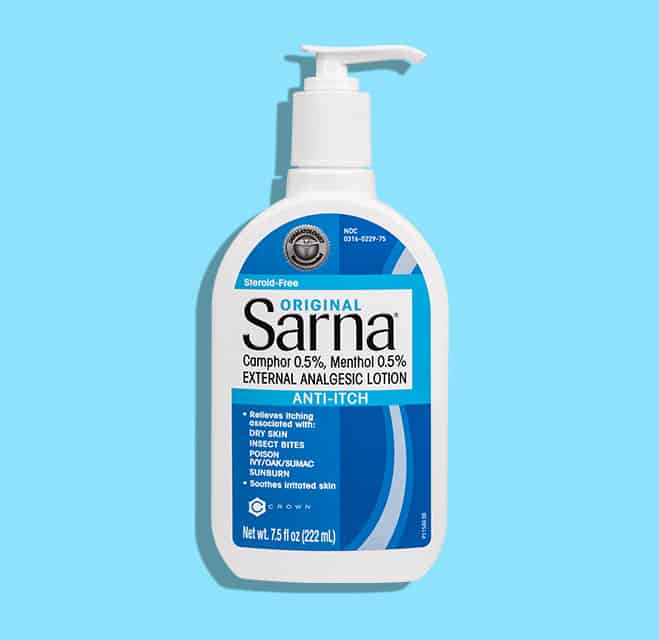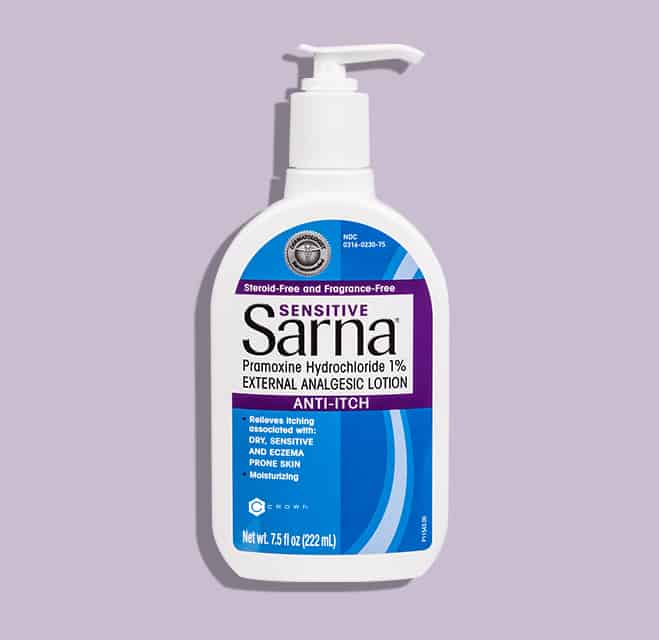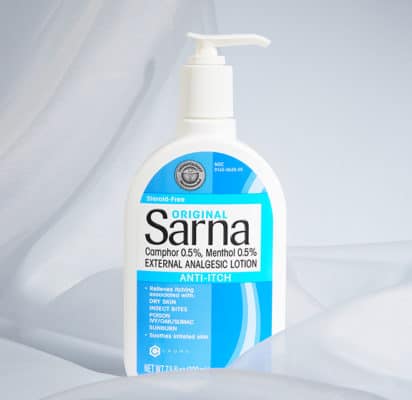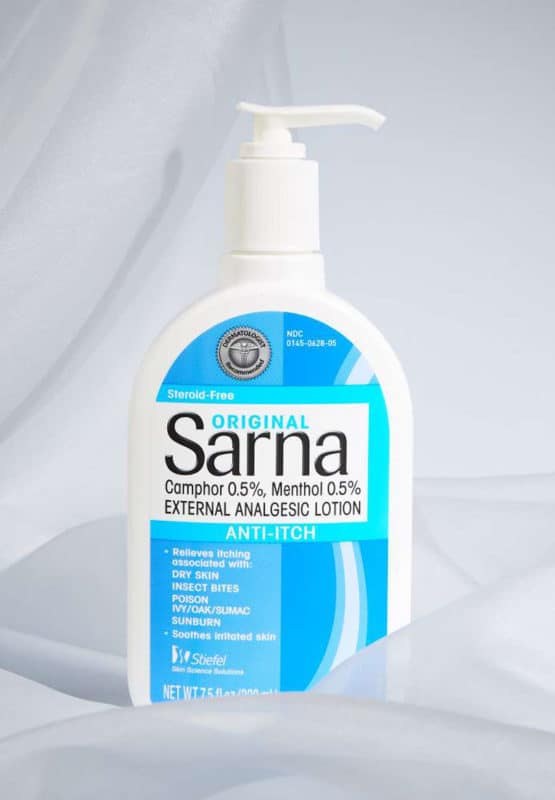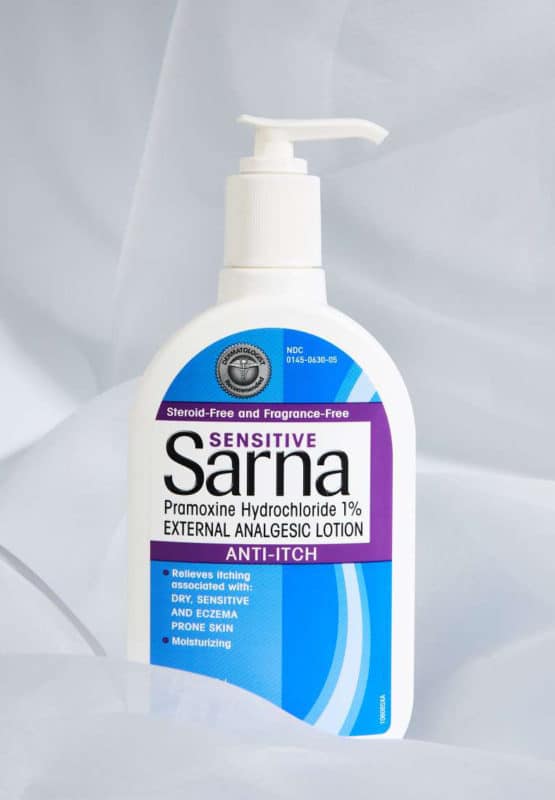When your child has eczema, life can be challenging. Everyday tasks such as going to school, taking a bath or sleeping become ten times harder. We’ll take a look at the causes of eczema and what you can do to relieve the symptoms.
Contact dermatitis
Perhaps the most common form of eczema; everyone deals with contact dermatitis at least once in their life. This form of eczema occurs when the skin has an allergic reaction or when something irritates it.
Some examples of allergic contact dermatitis:
- Poison ivy
- Nickel
- Latex
- Makeup
Some examples of irritant contact dermatitis:
- Diaper rash
- Acid burn
- Dry, cracked hands due to lots of contact with water
- Irritated skin around the mouth due to lip-licking

The first step to treating contact dermatitis is to determine the cause. This may involve some trial and error. Once you’ve determined what is irritating your child’s skin, avoiding it often clears the rash.
Over-the-counter products can help ease the itching associated with contact dermatitis. Sarna Original lotion uses the tried and true ingredients Camphor and Menthol to temporarily relieve itching. For a fragrance-free version, you may want to try Sarna Sensitive which contains Pramoxine Hydrochloride instead.
Atopic dermatitis

This is probably the condition you most associate with the word “eczema”. It’s also called atopic eczema or dermatitis. More than three million cases are reported in the U.S. per year. It is not contagious.
Atopic dermatitis is common in children during their first year of life. It usually appears as dry, scaly patches on their scalp, forehead and face and can be severe and long-lasting. Some good news: atopic dermatitis often becomes milder with age, although about half of children with atopic dermatitis will have flares as an adult.
What causes atopic dermatitis?
Unfortunately, we still don’t know the exact cause of atopic dermatitis. What we do know is that it happens when a substance from inside or outside the body triggers the immune system. The body then over-reacts and produces inflammation or the red, rashy patches that appear on the skin.
Researchers have determined genetics are a factor. If one parent has atopic dermatitis, then their child is more likely to have atopic dermatitis.
According to research, some people with atopic dermatitis have trouble producing Filaggrin due to a genetic mutation. Filaggrin is a protein that helps our bodies build and maintain a protective barrier on the top layer of the skin. This barrier is responsible for keeping moisture in and keeping bacteria and viruses out.
What can trigger an eczema flare?
Identifying what triggers your child’s eczema can be tricky. Sometimes an eczema flare can lag behind the exposure to the trigger. Eczema also affects everyone differently, so triggers can vary.
Here are some potential triggers that can cause an eczema flare or make it worse:
- Stress
- Climate and sweat
- Allergens
- Dry skin
- Hot baths
- Metals such as nickel
- Cigarette smoke
- Soaps and household cleaners
- Fragrances
- Certain fabrics such as wool or polyester
- Formaldehyde (can be found in household disinfectants, glues and adhesives)
- Isothiazolinones (often used in personal care products like baby wipes)
- Cocamidopropyl betaine (thickening agent used in shampoos and lotions)
How to manage eczema triggers at school
Some of the side effects of eczema are not visible but can be just as daunting if not more. If eczema keeps your child up during the night, he or she may be fatigued which can impact their mood and their schoolwork. Unfortunately, some kids who do not understand eczema may tease or bully a child with the condition.
Planning ahead can make a world of difference, or at least make eczema flares less scary when they do happen.
Here are the steps dermatologists recommend:
- Follow your child’s eczema treatment plan
- Identify potential triggers at school and develop a plan to avoid them.
- Talk with your child’s teacher. Let them know about any special accommodations your child may need such as sitting away from a heat source or applying moisturizer every so often.
How dermatologists diagnose eczema (atopic dermatitis)
If you believe your child has atopic dermatitis, the first step toward treating it is to call your doctor and set up an appointment. A dermatologist will look at your child’s skin for signs of a rash. The dermatologist will also ask if your child has itchy skin and ask about your family history.
Sometimes a dermatologist will test for allergies. This is usually done with a patch test that involves placing tiny amounts of allergens on your child’s skin. After 24 to 48 hours, the dermatologist checks the skin for reactions.
How to treat eczema (atopic dermatitis)
The best thing you can do to help treat your child’s eczema is to be proactive and keep the symptoms under control. It’s important to control the itching in order to prevent inflammation and infection. A mixture of medicine, skincare and lifestyle changes can help.
While there is no cure for atopic dermatitis, there are treatments. A dermatologist will create a treatment plan based on your child’s needs. This treatment may include:
- Moisturizer – The American Academy of Dermatology calls moisturizers the cornerstone of all atopic dermatitis treatment.
- Over-the-counter treatments – These may include anti-itch creams or lotions.
- Prescription medications, including oral and topical
- Phototherapy

How Sarna can help
Sarna’s Sensitive lotion is an over-the-counter option that is both a moisturizer and an anti-itch lotion. This takes care of two of the biggest symptoms associated with eczema: dry skin and itchy skin.
We know that fragrances can be irritating to sensitive and eczema-prone skin. That’s why our Sensitive formula is fragrance-free. Our lotions are anti-itch option to corticosteroids.
Some other tips to keep in mind:
Keep a journal. Write down what causes your child’s eczema to be worse or what makes it better. You may want to bring this journal with you to your child’s doctor appointments to help you talk with your doctor about adjusting your child’s treatment plan.
Make bath time a routine. Many dermatologists recommend the “soak and seal” method. Eczema causes dry skin which means your child’s skin may not be getting the moisture it needs. The National Eczema Association says the best way to replace that moisture is to soak in a bath or take a shower for ten minutes, then immediately moisturize afterward to seal in that moisture. Make sure you use lukewarm water as hot water can actually dry out skin.
No scratching. As much as your child may want to scratch, this can cause eczema to be worse and can lead to a skin infection. Dressing them in soft, breathable clothing and avoiding itchy fabrics can help.
Other types of eczema
Contact dermatitis and atopic dermatitis are the two most common forms of eczema that affect children. There are several other types of eczema that we have not mentioned here. The American Academy of Dermatology is a great resource for learning more about these conditions.
Sarna is the #1 over-the-counter lotion recommended by dermatologists for itch associated with skin irritations.* Read how Sarna Sensitive works to relieve the itch here.
*Data on file


